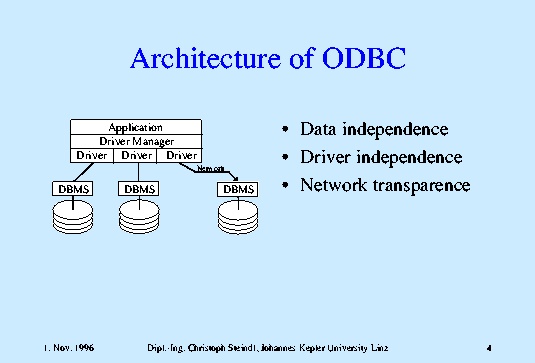Is Interoperability Achievable with ODBC?: Slide 4 of 10.
Click slide for next, or goto previous, first, last slides or back to thumbnail layout.

Click slide for next, or goto previous, or back to thumbnail layout.
ODBC is Microsoft's implementation of the Sequel Connectivity specification, an initiative of Lotus, Sybase, and DEC.
The ODBC library contains function calls that allow an application to connect to a database, to execute Sequel statements, and to retrieve the results. Furthermore it defines standard error codes and standard data types.
ODBC is an alternative to Embedded Sequel.
Embedded Sequel is efficient and portable across different hardware and operating systems, but the source code must be recompiled for each new environment. Additionally the program is tightly coupled with the database it was compiled for.
There is no need for implementation specific transformations on the source code of ODBC programs (such as pre-processing or pre-compiling).
ODBC is more flexible than Embedded Sequel in the sense that the same programs (object code) can be used to access different databases and can ignore underlying data communication protocols between the program and the database.
A program calls functions from the driver manager which passes them on to the respective drivers of the databases. A program can be connected to multiple databases at the same time and these databases can even reside on different machines in a network.
